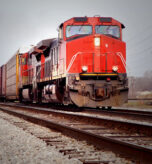Introduction
A leading chemical manufacturer must evaluate the feasibility of converting their specialty chemical outbound distribution from dry van truckload with super sacks to dry bulk truck/rail via transload. The company faced handling costs, product exposure risks, and plastic waste from super sacks. They engaged our firm to comprehensively analyze logistics operations and financial viability for the potential conversion. This assessment included evaluating product handling characteristics, estimating in-plant handling and storage costs, transloading and transportation costs, and developing specifications for equipment and related capital expenditures to determine the optimal distribution strategy.At A Glance
The consulting team was tasked with providing expert recommendations on logistics operations and financial viability for converting specialty chemical distribution from van truckload to bulk truck/rail.
Requirements
- Complete evaluation of handling characteristics and product flow requirements
- Detailed financial modeling comparing current operations with potential rail scenario alternatives
- Development of high-level specifications for equipment and related capital costs for implementation
Our team of supply chain professionals leveraged its deep supply chain expertise to deliver a comprehensive analysis that included material testing, equipment capacity assessment, rail rate estimates, bulk configuration exploration, and financial modeling to provide a data-driven recommendation that addressed the client’s operational and financial objectives.
The Challenge
The manufacturer was experiencing several challenges with their existing specialty chemical distribution system using super sacks in dry van trucks. Handling the super sacks created exposure risks for workers, generated plastic waste, and involved substantial labor costs at both origin and destination facilities. The annual operating cost for outbound distribution was approximately $7.8 million, and the company needed to determine if converting to a bulk transportation model using rail would deliver significant operational and financial benefits.
The assessment required careful analysis of multiple factors, including:
- Increased inbound transportation costs due to potential loss of backhaul opportunities
- Capital investment requirements for bulk handling equipment at three different facilities
- Rail infrastructure requirements and rehabilitation needs
- Maintenance costs over a 20-year operational period
- Rail rate negotiations with multiple carriers (CSX, NS, CN)
- Product flow dynamics and buffer storage requirements
- Impact on worker safety and exposure reduction
Additionally, the company needed to understand the total lifecycle costs of any proposed solution, including consideration of transitional expenses and potential operational disruptions during implementation.
PraxiChain Solution
The consulting team developed a comprehensive approach to evaluate and compare distribution options:
- Established a baseline cost model of the current dry van truck with super sacks operation
- Created detailed financial models for three scenarios of dry bulk truck to rail via transload (low, medium, and high capital investment)
- Conducted material testing to understand product handling characteristics
- Developed equipment specifications for bulk loading, transloading, and receiving operations
- Obtained rail rate estimates from CSX and NS for potential routes
- Explored bulk truck configurations optimized for Michigan’s high GVW allowances
- Calculated 20-year NPV analysis using a client discount rate of 8% and projected demand growth
- Designed material flow diagrams for all distribution scenarios
- Assessed safety and exposure considerations for each alternative
Results
Our analysis determined that while converting to rail would reduce annual operating expenses by approximately 20%, the high capital investment requirements would offset these savings. The 20-year NPV analysis revealed that moving to rail would, at best, be a breakeven proposition at the company’s 8% discount rate.
The required capital investments included bulk handling equipment at both origin and destination sites, fleet and rail infrastructure rehabilitation, and ongoing maintenance costs that ranged from $12 million to $23 million, depending on equipment specification levels. When accounting for additional contingencies, spare parts, and associated transport costs, the total capital requirements increased to $23-34 million.
Based on these findings, the consulting team recommended that the company maintain its current distribution model while exploring targeted improvements to its existing process. The recommendations included investigating mini-bulk options, improving super sack loading/unloading processes, and optimizing transportation operations, such as combining inbound and outbound volume to create continuous moves and leveraging strategic sourcing to reduce transportation rates. This approach would generate significant capital expenditures while addressing operational improvement opportunities and cost-reduction initiatives.






